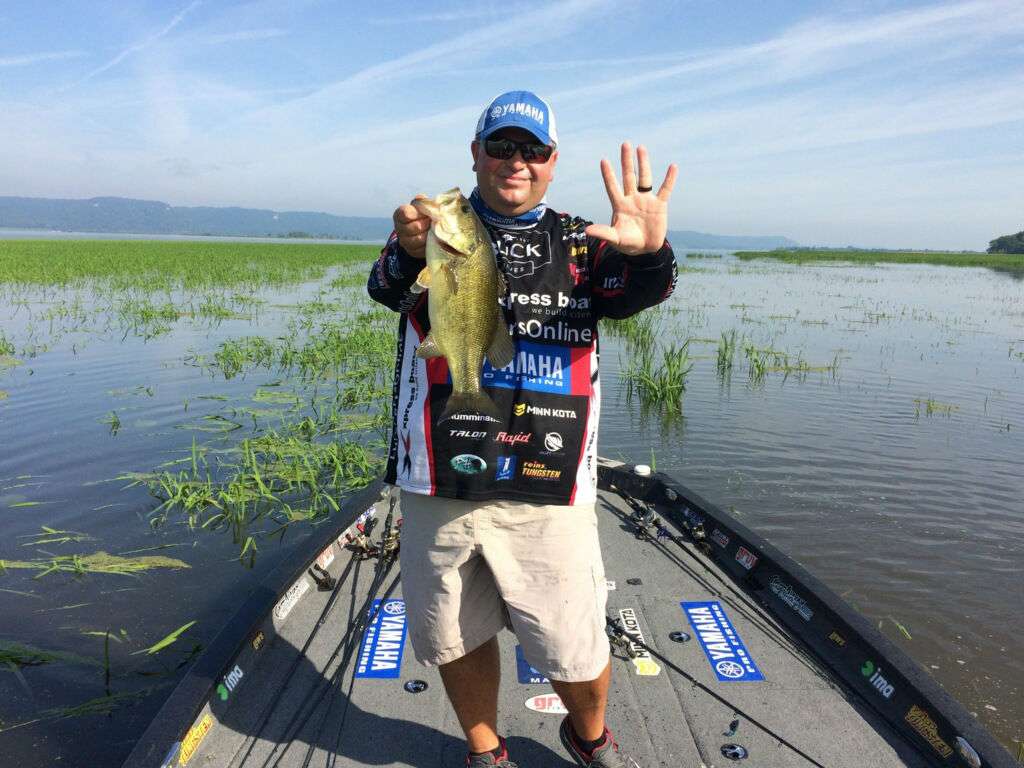
“There are always some bass shallow.”
You hear that all the time, and I can tell you it’s true. I’ve made my career with that in mind. At the same time, though, there are always fish deep. And those fish are starting to move. So even if you’re like me and you fish shallow most of the time it’s important to know how to find those moving bass, especially now that fall is on the way.
It doesn’t matter that it’s been ridiculously hot this summer or that it’s still that way here in the Midwest. Mother Nature does her thing. The days are getting shorter, and the sun is at a lower angle in the sky even if the water temperature is 85 degrees or better.
I know that just by looking around. I don’t need any fancy scientific equipment to tell me what’s happening. All I need are my eyes.
The corn is turning brown and the soybeans are turning yellow. If you look closely, you can tell that the leaves on the trees are not as bright as they were two or three weeks ago and some of them are even dropping off the limbs. Those things only happen when the growing season is over and fall is right around the corner.
The same thing is happening in the water. The fish know what’s coming and they’re starting to move. I say fish because it’s not just about bass. The fall movement is about everything — minnows, catfish, bluegill, crappie and whatever else is in the lake.
If you’re fishing up shallow and things aren’t going your way, try looking around. See if you can find a ditch or a channel that runs off the shore or that swings up near it. Don’t worry about the absolute depth. Just worry about the change in depth.
If the shoreline is 3 feet deep, a ditch that’s 4 feet deep is plenty good. Moving bass will use that little bit of extra depth as a trail leading to shallow water and shallow forage.
But finding the path is only the first step. The second step is finding something that makes it different. A rock, a stump, a laydown or a sharp change in direction is what you want to target. If it’s right on the edge of the ditch or channel and a shallow flat is right on the other side of it, that’s even better.
These things you can find for yourself. Use your electronics to help you and to fine tune your search but don’t become addicted to them. Open your eyes, and then use them to your advantage.
Look around.
Once I start fishing I really only use two types of lures. If the cover allows it, I throw an ima square bill or a Phil Hunt balsa square bill in either black-and-blue or white. If the cover’s real thick I’ll pitch or flip a big black worm or a LurePartsOnline jig.
Don’t make fishing over complicated. It isn’t rocket science. A simple, straightforward approach coupled with your electronics and your common sense will do you just fine this fall.

